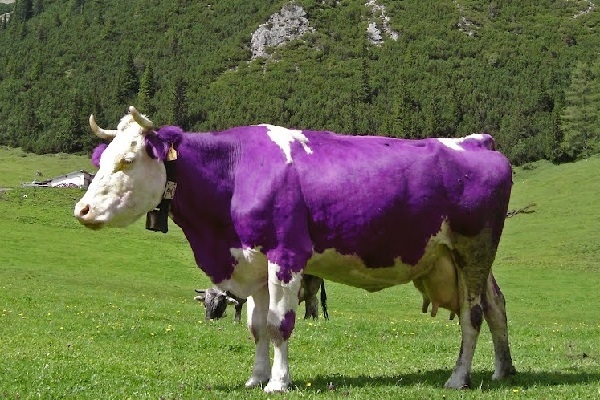Humanity is becoming more resistant to advertising. We are used to seeing it on billboards, print banners, at shopping malls, on social media, and almost everywhere on the web. We use ad blockers because we don’t like it when anyone tries to sell us anything, although we love stories.
Since childhood, we are attentive story listeners. The story is different than pitching a product or service directly. It unites people into a big community of the like-minded who want to listen to what a brand is saying because they share the company’s values, goals, and dreams.

Today’s businesses shouldn’t focus on the question, “How to sell?” They must try to think about “How to make people hear us?” The alternative question that conveys the same idea is, “How to tell a more engaging story?” Companies should invest in storytelling to reach the top of success and conquer the customers’ hearts with something valuable and original.
Brand storytelling is the most effective marketing trend for today. It has been perfectly performing before and seems to be still effective even tomorrow. However, you might ask: how to tell a story most engagingly? How to tell a story that resonates?
Here we will consider the top five most actionable brand storytelling practices. They help companies to be heard by their audiences, build customer loyalty, and grow their popularity.
Trend #1. Anti-Branding

Or anti-storytelling. It is still about telling a story. However, this story is not about a brand. The brand can tell it, the brand can spread it, although this story should be about people and their values.
An average customer is already fed up with obtrusive sales pitches and… and even unobtrusive pitches too. People are tired of listening to brands that are talking about themselves too much. The only thing that can stop their scroll, make them read, and engage with a brand is a real-life story about somebody or something that is very close to each and everyone.
It should be a story about something little distinguished in the crowd. This story will find its tribe and resonate with it.
A great example is an anti-branding story created by Zendesk, a customer support software company. It is not about Zendesk but about people and finds reflection in everyone’s life. Such kind of advertising is genuinely unobtrusive and resonating with the audience.
It is about a fictional rock band who are disappointed with the unknown company “stealing” their name. Although musicians admit their need for Zendesk’s services and even create a song about the significance of customer support.
Trend #2. Emphasize on Tragedy
Why? Because a so-called “tragedy” may appear to be the most critical component of a good story. According to Aristotle, it should include three other components: pity, pain, and catharsis. They turn stories into intriguing and memorable experiences that trigger underlying human feelings: fear, anger, sadness, and surprise.

In marketing, “tragedy” is manifested as the customer’s pain point. A brand that hears its audience develops a product (or provides a service) that gives relief to a customer and resolves a problem. You can emphasize a “tragedy” in marketing storytelling to make a message more compelling and touching. It sounds like a problem description and is a necessary component of every good message.
Trend #3. Animated Story
Animation has become one of the most popular marketing trends in recent times. It has been initially born as a storytelling technique for cartoons. However, today marketing leaders use animated videos to promote brands, products, services and educate customers on how to use their products.
We perceive animation subconsciously as an entertaining cartoon, not as a promotional pitch at all. It is commonly fun, attractive, and beautiful. And what’s most important, it is twisting around a story. You can use animation in marketing to spice up a message and turn your story into a kind of entertainment, engaging different target audiences and demographics.
An excellent example is Psiphon’s animated video advertising produced by Explain Ninja.
Trend #4. Mini-Ads
Today’s traditional advertising is losing its effectiveness due to changing consumer behavior. Attention spans become much shorter, and it’s challenging to keep people watching an ad longer than several seconds. Brands should look for alternative ways to connect with their consumers in the digital world, overloaded with banners, textual, and video ads.
Mini-ads have become a response to the growing demand for shorter and more inventive advertising. Facebook has become the first to announce the intention to launch six-second ads that would let companies tell a condensed story to customers.
YouTube has also followed this trend and launched the ‘Six-Second Story Challenge’, an initiative that has brought incredibly good results. This snappy 6-second format seems to become a new actionable practice for forward-thinking brands that strive to drive engagement of the audience that’s already overwhelmed with content.
Trend #5. Combine Incompatible

How to combine incompatible, mix expected and unexpected, relevant, and illogical? The intriguing story that makes us feel something should include all this. A brilliant example is an advertising campaign launched by Milka. Do you remember that famous purple cow?
The cow eating the grass in the Alps can give the best milk to use in chocolate afterward. It is logical. However, what has made Milka’s image so influential and memorable? The answer is something that goes beyond logic. The color of the cow is purple. It seems to be a detail. However, this detail has made a considerable influence on a brand image and made it stand out from all other chocolate brands in the market. That lovely purple cow has done all this.
Conclusion
To tell a great story that touches someone’s heart and engages a mind can be easy if you know several intelligent practices. Here are just a few of them, although we hope they will be a good beginning for your first brand storytelling campaign with brilliant results.
Digital & Social Articles on Business 2 Community
(30)
Report Post





